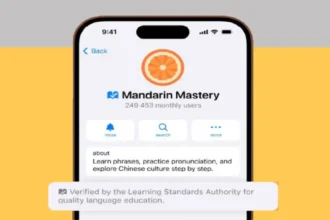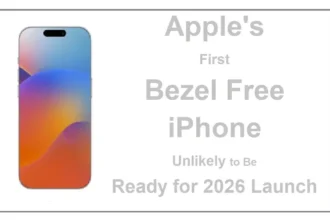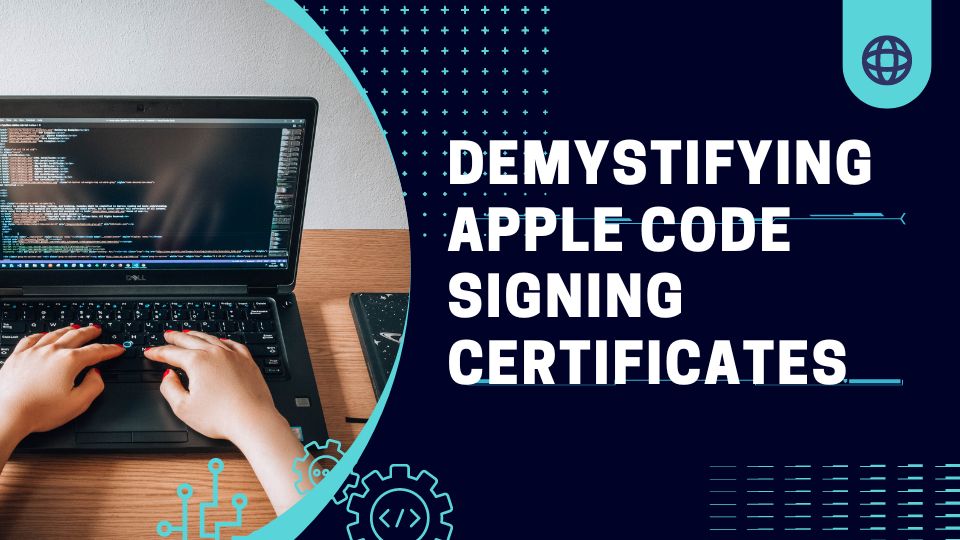Compliance is crucial if you publish an app on the Apple ecosystem. Apple is famous among app publishers for its security requirements while publishing the app on the app store. One way to ensure compliance is to install a Code Signing certificate.
It helps ensure that software downloaded from the App Store is genuine and has the source code intact. However, code-signing certificates can be complex and confusing, especially if you are unfamiliar with Apple platforms.
In addition, there are many options likeComodo Code Signing certificate, DigiCert Code Sign certand others for your applications. However, Apple Code Signing certificates are necessary to release software on its platform.
So, choosing the correct Code Signing certificate for your applications becomes crucial. This blog post will help you understand Apple Code Signing certificates and provide everything you need to know to get started.
So, let us first understand Code Signing certificates for Apple platforms.
What is Apple Code Signing certificates?
An Apple Code Signing certificate allows users to verify the authenticity of an application they download from the app store. The Code Signing process is mandatory for every application that a developer submits for publishing on the app store across macOS, iOS, and iPadOS.
When you download software on your Apple device, it goes through a verification process. It ensures it is from a legitimate source and has not been modified. Developers can get Apple Code Signing certificates by enrolling in the Apple developer program. Using these certificates, developers need to code sign apps before distribution.
Understanding the basic Code Signing (How it works and benefits app developers and users)
Code Signing involves digitally signing executable code with a cryptographic signature. The digital signature is what Apple devices use to verify whether the application is authentic. Code Signing certificates act as a medium for developers to encrypt the software and ensure secure access for users.
Every Code Signing certificate has a pair of security key like a public key, and a private key. Here is how it works,
- A developer develops the software and generates a code-signing request(CSR) with a private key
- Once a certificate authority verifies the CSR details, it issues a code-signing certificate
- Developers code-sign the app through a private key and distribute it
- Users download the app, and their device uses the public key in the certificate to verify the identity of the app publisher.
- If the device cannot verify the identity of an app’s source, it will show a warning sign.
Types of the Code Signing certificate
Two types of Code Signing certificates are typical for Apple platforms,
- Development certificates
- Distribution certificates.
You can use development certificates to sign apps in the development or testing phase. On the contrary, you can use distribution certificates for software ready to be deployed.
Developer certificates allow developers to sign and test their applications on physical devices. Developers can code sign test apps or beta releases using a developer certificate and distribute them among limited registered devices. It helps ensure the security of your app’s source code during the development and testing phase.
On the other hand, distribution certificates allow developers to comply with Apple’s distribution guidelines. These certificates are associated with specific provisioning profiles, which define details like who is entitled to use it and the distribution channel.
While choosing a certificate, you need to understand specific requirements. For example, you need an Apple Code Signing certificate if your application is solely developed for Apple platforms. However, if you are developing an app for deployment across many platforms, certificates like the Comodo Code Signing certificate is a better option.
An extended validation certificate is essential, especially for building an enterprise app. It requires comprehensive business vetting including proof of business legal and operation existence, which improves trust among your customers. One fine example is the Comodo EV Code Signing certificate, which you can use for your enterprise apps. An Apple Code Signing certificate is preferable for macOS, iOS, and other platforms.
Once you choose the type of certificate to install, it is essential to understand how to code sign apps on Apple’s platform.
Code Signing process for different Apple platforms
Code Signing differs from platform to platform in Apple’s ecosystem. For example, you need essential chain access tools for code-signing iOS apps. While the process is almost similar on Mac with little changes.
IOS Code Signing process
The developer follows the standard process of first creating a CSR using Mac’s keychain access tool, which includes the public key. It is also crucial for developers to enroll in the developer’s program to access all the resources.
Further, the developer needs to create a unique app ID and provision profiles. It helps in linking the app’s bundle identifier with the signing identity. Next, developers need to choose their development team in the Xcode and configure Code Signing settings for the app project. From here on, Xcode manages the Code Signing process automatically.
MacOS app code signing
The Code Signing process in macOS is similar to iOS code signing, with few specific changes. For example, developers can generate CSR using keychain access on the Mac. Further, developers create app IDs, provisioning profiles, and configure the Code Signing settings in Xcode.
Common challenges and troubleshooting tips
Despite the comprehensive code-signing process offered by Apple, developers face several challenges. For example, code-signing failures are a common issue for many developers. The challenges of Code Signing failures can be frustrating, especially if you are new to Apple code signing.
#1. Provisioning profile errors
A common problem with most Apple Code Signing certificates is the provisioning profile signing errors. When you encounter such an error, the system will show your app ID or certificate profile as invalid.
Error Message: Invalid Provisioning Profile
No Such Provisioning Profile Was Found
This can happen if you change the details of the app ID or Apple Code Signing certificate. Another key reason for such an error is an expired certificate. So, make sure you link the profile with the correct app ID and configure the Xcode accordingly each time you make changes.
#2. Certificate renewals
One of the significant challenges is certificate renewals. Developers need to ensure that certificates used for the distribution of apps are not expired because the Apple app store is stringent on the Code Signing process.
Therefore; if your app has an expired certificate, it will be taken down from the app store.
#3. Installation errors
Such errors occur when the system cannot verify the executable file and shows the message “Could not verify executable.” There can be several reasons for such errors, like corrupted signature bundles or invalid provisioning profiles.
The best way to ensure such errors do not occur is to install the Code Signing certificates properly. Also, ensure you use Apple Code Signing certificates for installation. Other options like DigiCert Code Signing certificates, Sectigo Code Signing certificate are best if you want to publish apps on enterprise platforms.
Best practice for Apple code signing
Apple Code Signing certificates installation, provisioning, and Xcode management requires the implementation of several best practices to cope with significant challenges.
Keeping Certificates Secure
Developers must ensure that Code Signing certificates and their private keys are secure. The best way, however, for any developer to ensure the security of private keys is to store them in Hardware Security Modules (HSMs) devices.
Automating the Code Signing Process
Tools can help you automate the code-signing process. However, you must ensure that automation does not create configuration issues. One way to ensure that is by manually
Changing the settings for Xcode execution.
Regularly Updating Certificates,
Updating your Apple Code Signing certificates, provisioning profiles and app IDs is crucial to ensure no errors. If you change the app ID or provisioning profiles, link it properly. Another key is to ensure timely renewals. Make sure your certificates are not expired and are configured for Xcode execution.
Conclusion
With the increasing cyber threats, Apple is looking to secure its platforms, and this is why you need to have the correct Code Signing certificates. Though Apple does offer Code Signing certificates, you may need one for other platforms. Therefore, you can choose to install a Comodo EV Code Signing certificate from CheapSSlShop for your enterprise apps. However, if your target platform is macOS or iOS, Apple Code Signing certificates are what you need. Though there are challenges that you may face in the Apple Code Signing process, it is essential to implement best practices. However, which best practice to implement depends on your specific requirements.






